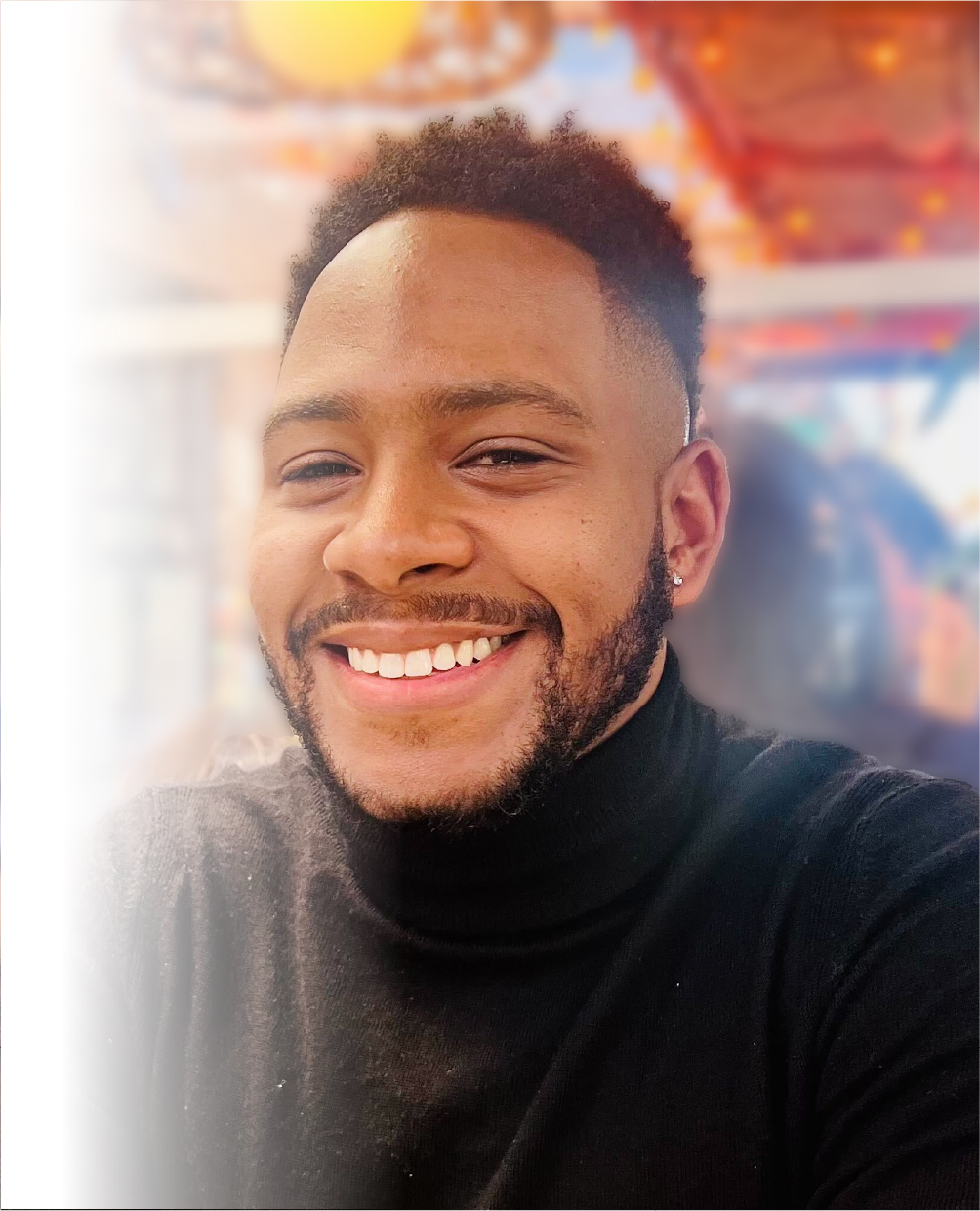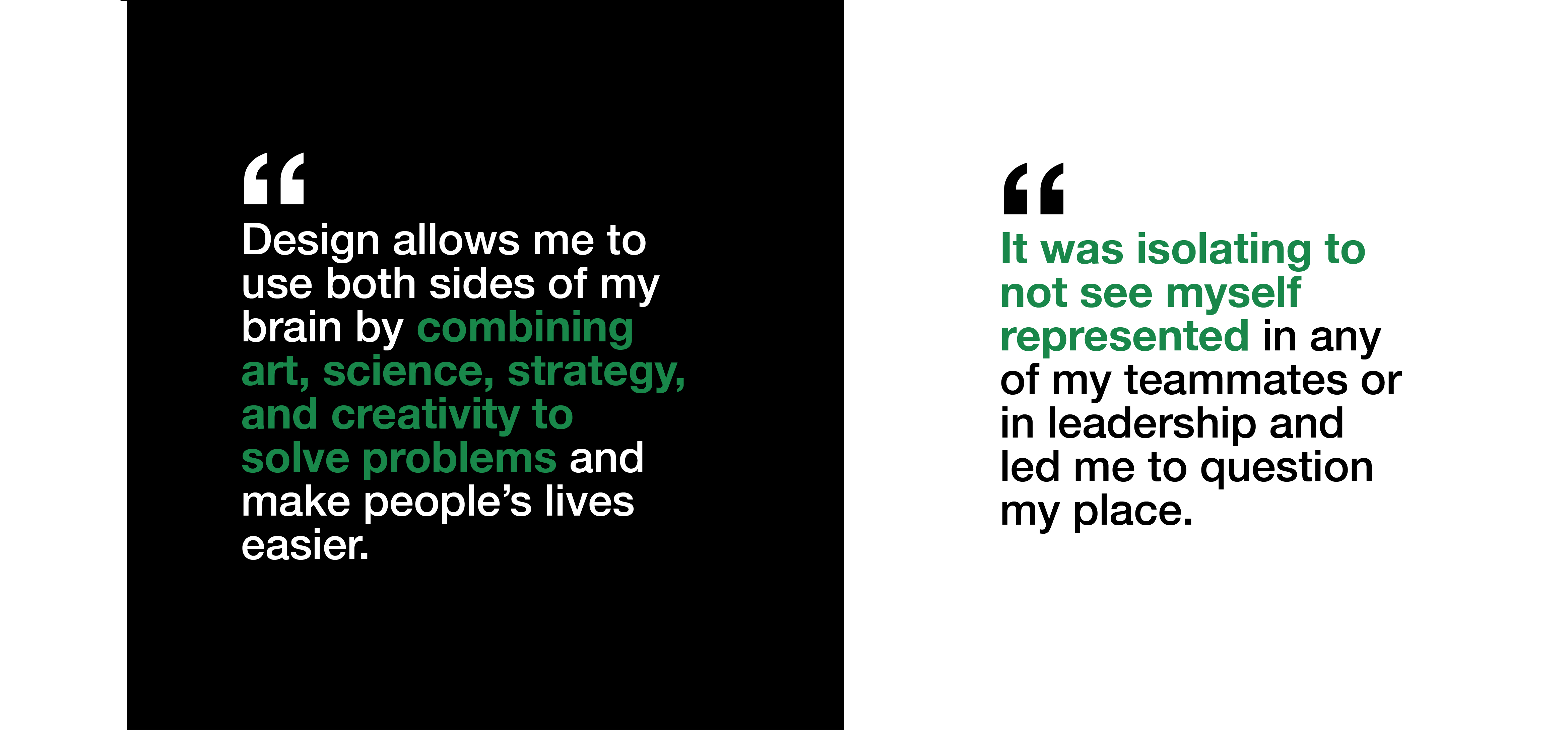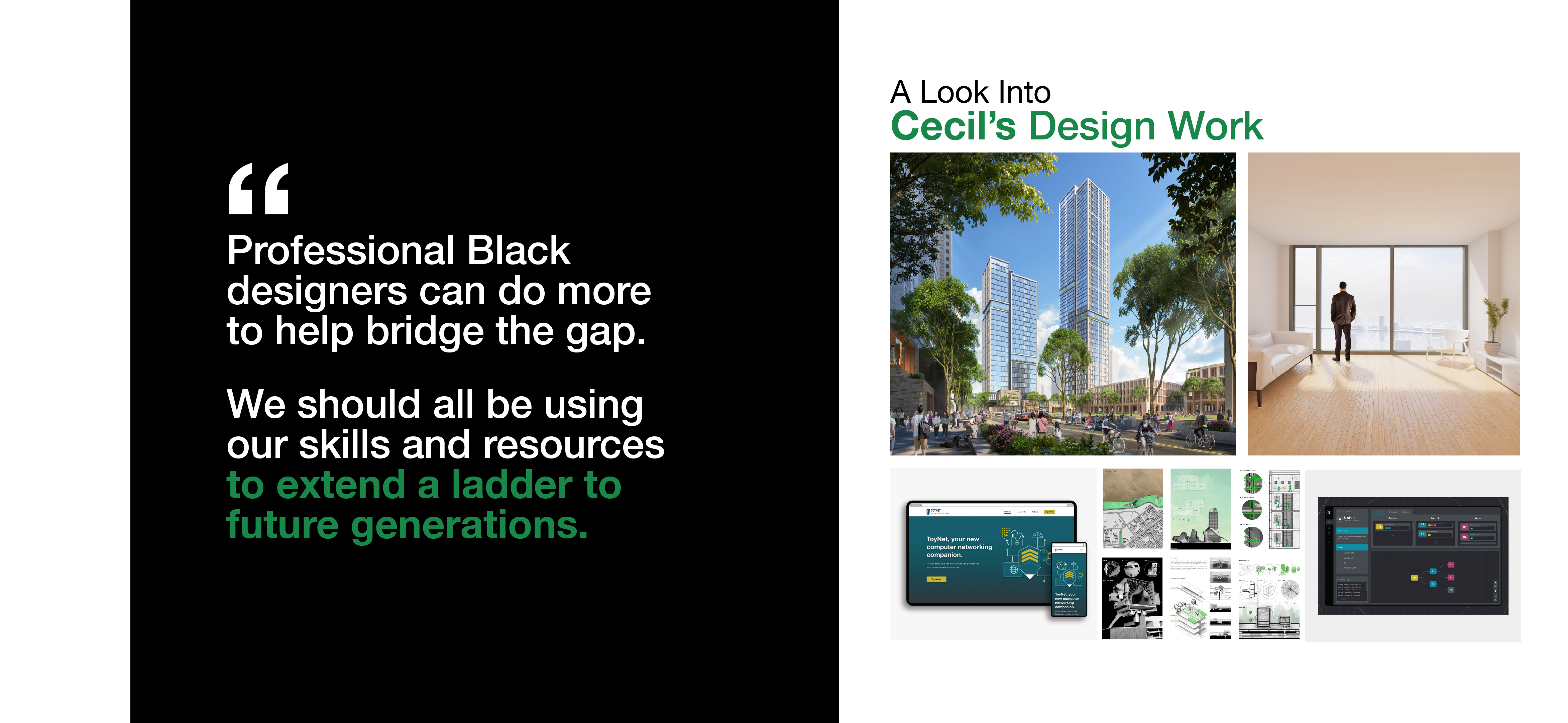Story
Introducing Cecil Green

Introducing Cecil Green, an Interaction Designer at Carrier
Q: Tell us about yourself and your design career.
A: My name is Cecil Green and I’m a multi-disciplinary designer with more than 7 years of experience. When I was young, I loved playing with Legos and drawing my favorite cartoon characters. I made a career out of creating things because it has always brought me joy.
I graduated with a bachelor's degree in architectural science from California Polytechnic State University in 2017. While in college, I studied abroad and had my first internship at a small architecture firm in Copenhagen, Denmark. From 2015 to 2020, I worked at various architecture firms designing everything from high-end residences to mixed-use skyscrapers.
After a major layoff in 2020, I pivoted into a UX/product design career and started designing an e-learning platform for incarcerated veterans for a small non-profit called Project Reclass. Now, for the last 3 years, I have been an Interaction Designer at Carrier where I design IoT software for connected assets. Although I am no longer practicing architecture, I am 80% done with the licensing process and plan to obtain my professional license within the next year.
Q: What sparks your passion as a designer?
A: I have never been able to focus on one thing at a time. So, I consider myself a “jack of all trades, master of none.” Design allows me to use both sides of my brain by combining art, science, strategy, and creativity to solve problems and make people’s lives easier.
Q: Did you experience any obstacles when you started your career in the design industry?
A: An obstacle I was unprepared for when I entered the field was the consistent lack of Black representation within my working environments and teams. I knew about the lack of diversity in the design industry but to experience it first-hand was eye-opening. It was isolating to not see myself represented in any of my teammates or in leadership and led me to question my place. I’ve built a ton of confidence over the years and learned to embrace that discomfort, but that feeling of isolation still lingers.
My personal experiences are a part of what drives me to continue working alongside the DID Collaborative to increase diverse representation across the industry.
Q: What advice can you share with aspiring designers who are just starting their careers?
A: Education is invaluable, but so is real life experience and on-the-job training. Job shadowing, apprenticeship, mentorship, and summer programs can help you better understand how to apply the skills you learn in school. There are seemingly an endless number of genres, sub genres, and job titles within the design industry. So, you can make better and more informed decisions about your career if you explore different positions and work environments early.
Q: What, if anything, is needed within the design industry to improve the situation for future Black creatives?
A: Improve representation within the field. Aspiring Black creatives need to see themselves in this profession.
Expose students to the industry early. Young Black creatives need early exposure to the field to understand the possibilities of a career in design.
Provide early career support. Black creatives beginning their career need as many hands-on experiences as possible to test out various pathways and better understand where their skills and aspirations can be nurtured.
Help bridge the gap within the industry. Professional Black designers can do more to help bridge the gap. We each have something to offer younger generations. We should all be using our skills and resources to extend a ladder to future generations.

